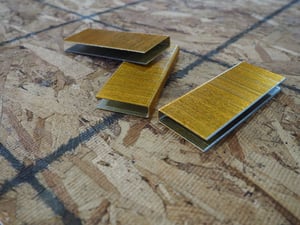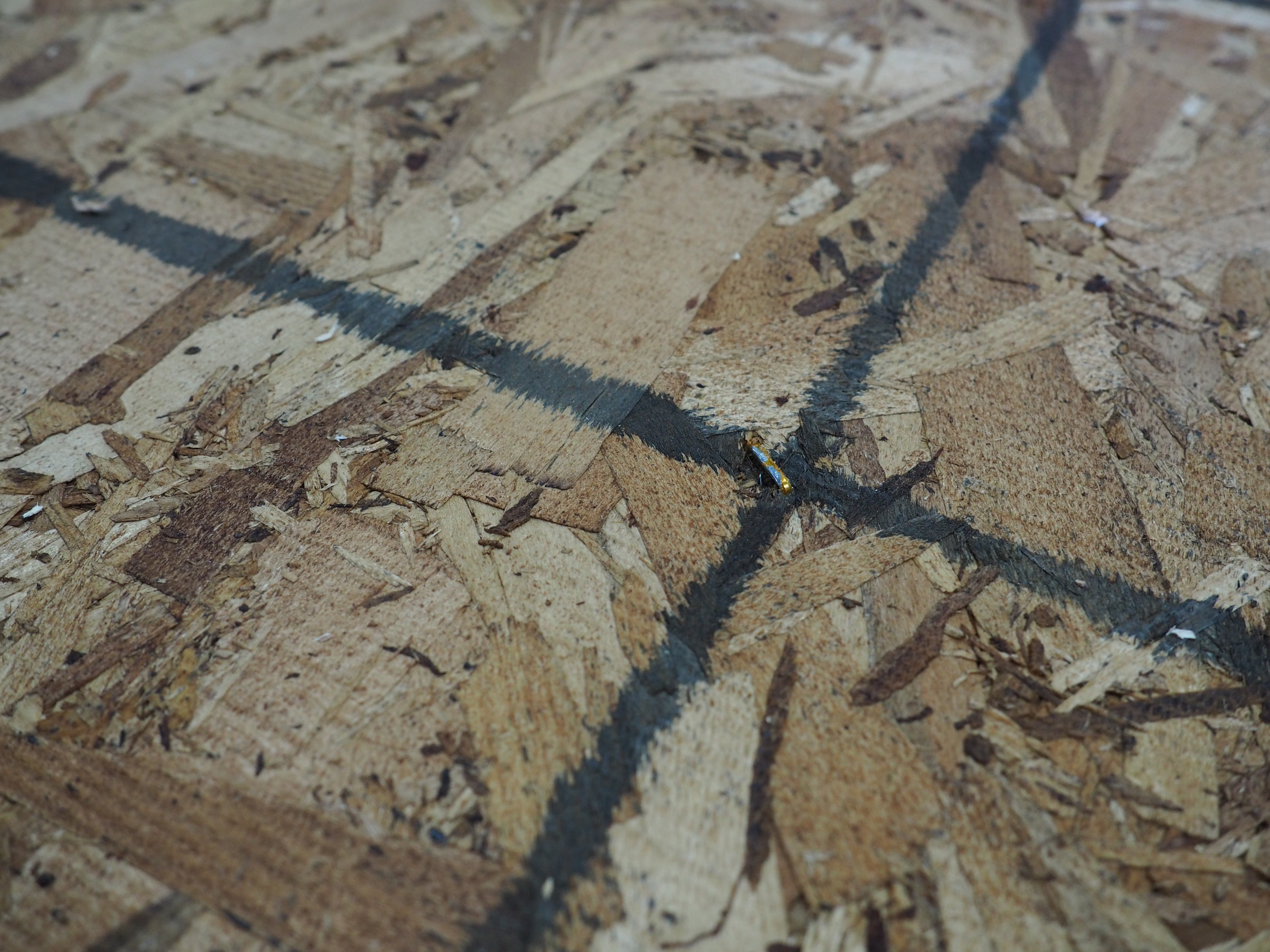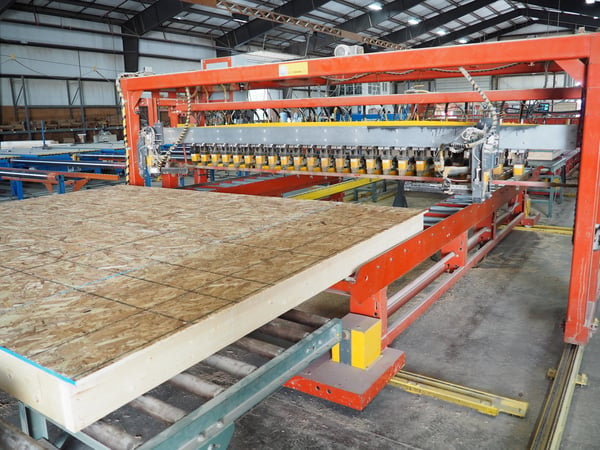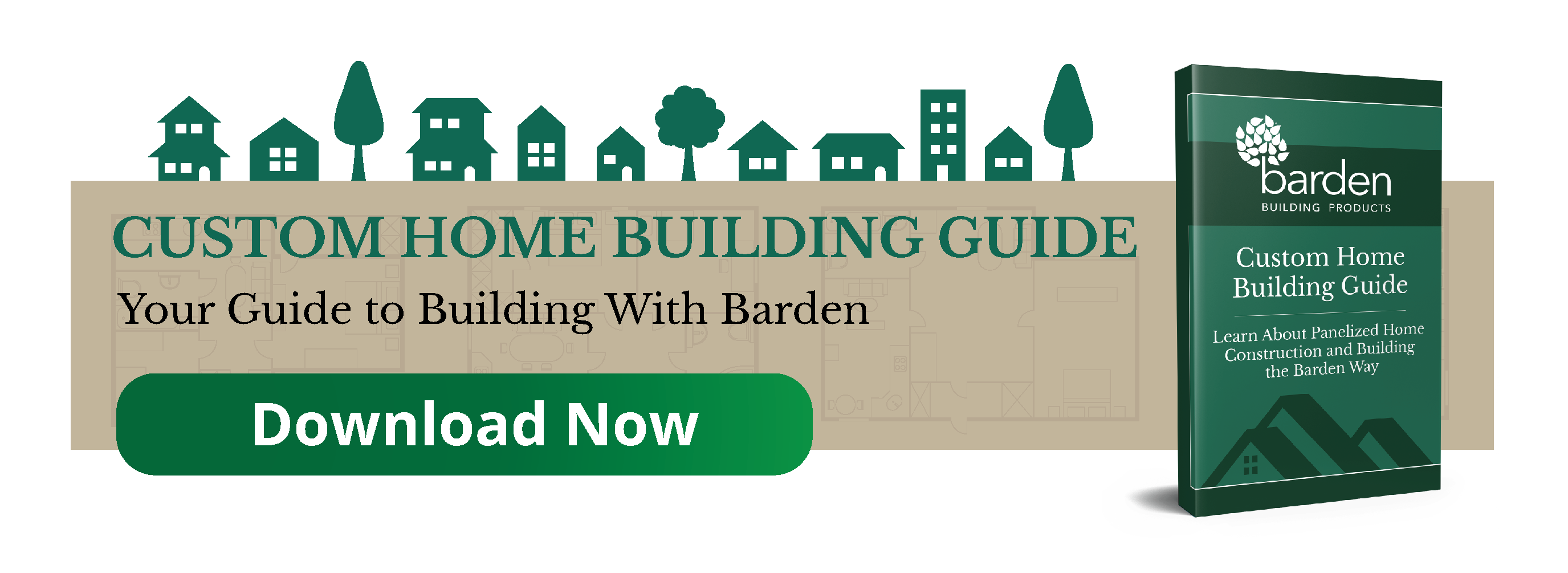.jpg?width=1920&name=Barden-wall-frame-2%20(2).jpg)
When it comes to designing a custom home, it can be easy to get caught up in the fun details: picking out the floor plan you like, furnishing the inside, mastering the landscaping.
But it’s even more important to put ample time, energy, and thought into structural elements of your home, such as house sheathing options, that are not only more functional for your home -- but impossible to change later.
Make sure not to gloss quickly over the house sheathing options that are presented to you, and think carefully about what is best for your build. We’ve outlined the key considerations here to keep in mind when selecting the ideal exterior sheathing.
What Does Exterior House Sheathing Do?
The goal of sheathing is simple: to act as a barrier between the outside and inside of the home. Diving a little deeper, sheathing is what helps prevent drafts, seal in heat/ cool air, and saves you money on your utilities.
There is a common misconception among some homeowners that homes “need to breathe” -- meaning, there needs to be air gaps in the sheathing of the home to allow for proper ventilation. This is a myth and leads to inefficient final builds and a weakened house structure.
The truth is, your home should be as air-tight as possible, allowing for little to no gaps in the sheathing.
How do you accomplish this? A combination of your choice in home building partner, and your choice of sheathing material.
House Sheathing Material Options:
North American Truss, our manufacturing division than handles the structural components of Barden homes, offers the following sheathing material options to our customers:
- 7/16" OSB
- 1/2" Plywood
- Zip Sheathing
Not only can the aforementioned materials be used for walls, but for roofs and floors as well. Each of the three choices comes with varying considerations based on material composition, price, and versatility.
1. 7/16" OSB
OSB, or oriented strand board, is similar to the familiar plywood that many homeowners know of, but is actually comprised of wood shavings that are glued together for strength.
This material is load rated, which means it is certified to be strong for housing applications. Additionally, it is resistant to warping and delamination -- and holds up better to moisture and the elements.
At Barden, this material is our sheathing standard due to its impressive performance in homes.
2. 1/2" Plywood
Plywood is an old favorite for exterior sheathing materials and is still chosen by many homeowners due to its reputation for being both versatile and affordable.

There is a perception that plywood is a superior sheathing material due to its ability to hold nails better. Though this is debated by members of the hold building community, at Barden we use glue coated staples (pictured left) in our sheathing to prevent any unstable nailing hazards.

NOTE: Both the OSB and plywood sheathings require housewrap (Barden homes have Typar) as an additional vapor barrier. The housewrap is designed to let vapor out of the house, but not in.
3. Zip Sheathing
Our team often refers to zip sheathing as “the sheathing of the future.” This high performance OSB is engineered to ensure all the components fit together perfectly, eliminating any gaps. It also features a special tape utilized to cover any seams, and can even be foamed for additional insulation.
The OSB has an additional moisture repellent coating with a built in vapor barrier. Because it is so air tight, some owners opt for an additional device in their HVAC system, called an HRV, to bring fresh air into the house.
If efficiency is a prime consideration for your home, zip sheathing is an outstanding choice as very little, if any, outside air gets inside the home.
One consideration to keep in mind is that zip sheathing does come with a larger upfront investment than the other exterior sheathing options. However, many homeowners remark that it is worth it in the long run since they save on the cost of heating and cooling their home.
Additionally, opting for panel building when incorporating zip sheathing into your home helps save time and money when compared to installing it in the field during stick building.
Pick a Build Process That Matches the Efficiency of Your Sheathing
While your sheathing choice does some of the work keeping your home airtight and efficient, it cannot work alone! If a home builder is shoddily assembling your home on site with imprecise, outdated methods -- there will be gaps in your walls, trusses, roof, and floor.
Opt for a building method that is precision engineered and manufactured, and eliminates human error with technology.

Reach out to our team today, and one of our experts will walk you through how we can build an efficient home to meet your needs.
Have questions about the rest of your custom home?
Dive into our Custom Home Building Guide!


